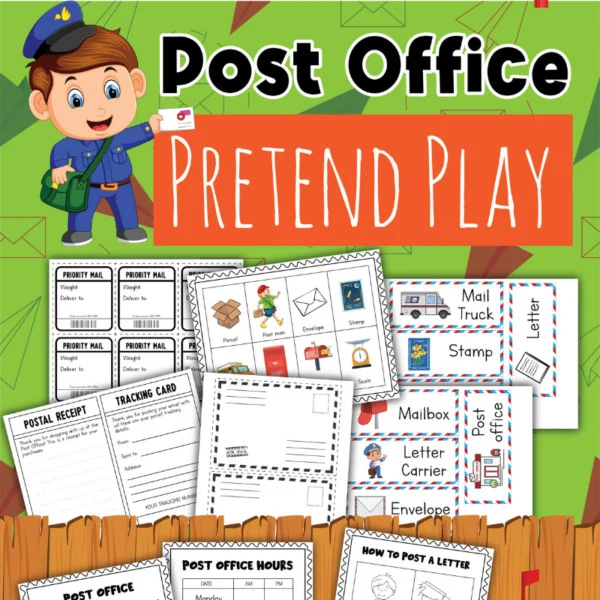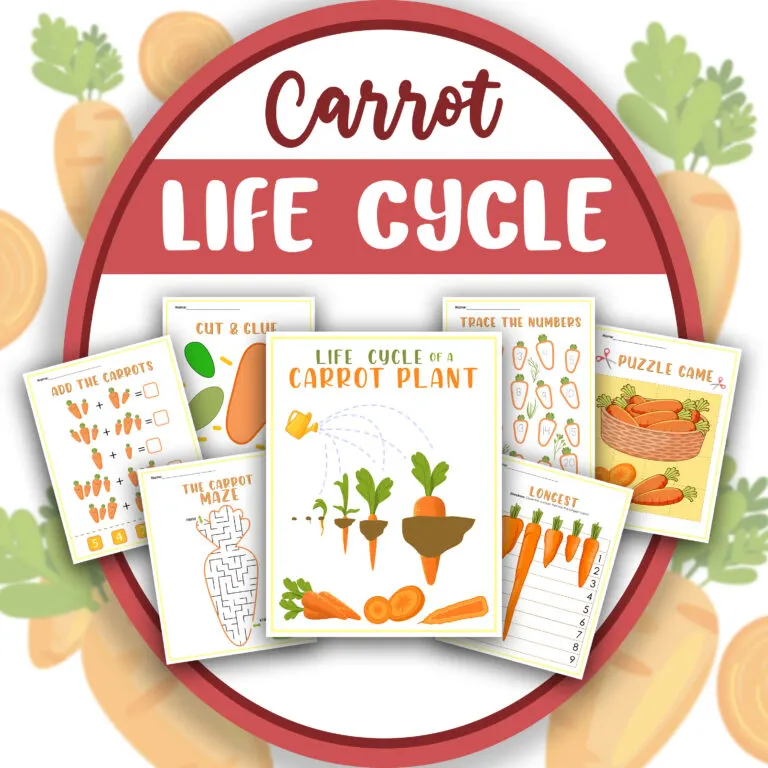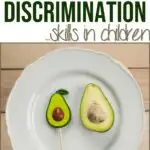As parents or educators, we want to help our children develop their abilities in every aspect of life. Visual discrimination is one skill that may not get as much attention as others. This refers to seeing and differentiating between different shapes, colors, sizes, and symbols.
If you’re raising a toddler or a preschooler, you’re probably already familiar with some important child development skills. Let’s dive into the importance of visual discrimination in early learners.

This blog post will explore visual discrimination, why it’s essential, and how you can help your child develop this skill.
What is Visual Discrimination?
Visual discrimination is a crucial skill for a child’s overall development. It allows children to notice the differences and similarities between objects and enables them to analyze information.
Visual discrimination distinguishes letters and numbers, colors, shapes, and patterns. It’s super important for kids to develop this skill as it will help with lifelong learning.
Why is visual discrimination so crucial for a child’s development?
Learning to read, write, and do math is important for kids. To get good at these things, a kid needs to know the difference between letters, numbers, and signs and how to combine letters to make words.
Plus, being able to tell things apart, like when playing with toys or doing puzzles, can also help improve their problem-solving skills.
How to develop visual discrimination skills in children
It’s great to know that there are many fun ways to help your little one develop visual discrimination skills! You can start by practicing color and shape recognition by pointing out similar or contrasting items.
You can also introduce matching and sorting games, spot-the-difference games, and jigsaw puzzles that engage your child’s visual skills. These activities will help your child improve their visual skills and keep them entertained.
Another great way to boost this skill is to have your child work with arts and crafts, which helps focus on the different textures, shapes, and patterns.
Activities like drawing, coloring, and cutting are simple exercises that can help your child strengthen their visual perception abilities.
These cutting sheets are great examples of fun activities that can help with visual discrimination:
Once your child has mastered shape and color recognition lessons, which you can test by playing color and geometric shapes with him/her, you can move on to more complex visual games and activities.
You can play board games and puzzles that involve visual memory and focus on details, like finding ‘Waldo’ or other similar hidden picture books.
Visual Discrimination Development
Parents and educators can create an environment that encourages visual discrimination skills and helps kids develop their cognitive skills. This is a great way to build a strong foundation for their learning and development.
Here are some tips to create an environment conducive to promoting the development of visual discrimination:
1. Visual Stimulation:
Provide a visually stimulating environment with colorful books, toys, and art materials. This encourages children to explore and distinguish between different colors, shapes, and patterns.
2. Sorting and Matching Activities:
Engage children in sorting and matching activities using objects with varying characteristics such as size, color, and shape. This helps them develop the ability to discern visual differences.
3. Puzzles and Games:
Introduce puzzles and games that require visual discrimination, such as finding hidden objects or completing intricate patterns. These activities enhance attention to detail and visual acuity.
4. Storytelling with Visual Cues:
Use picture books and storytelling with visual cues to help children observe and differentiate between various visual elements within the narratives.
5. Outdoor Exploration:
Encourage outdoor exploration to allow children to observe nature, different textures, and natural patterns, thus honing their visual discrimination skills.

Comparing Visual Discrimination with Other Childhood Developmental Skills
Visual discrimination is just one of the many crucial developmental skills children need to cultivate. Let’s compare and contrast visual discrimination with other important childhood developmental skills:
Visual Discrimination vs. Fine Motor Skills:
- Visual Discrimination: The ability to differentiate and recognize visual details, such as shapes, colors, and patterns.
- Fine Motor Skills: Entail the coordination of small muscles, enabling activities like grasping objects, drawing, and writing.
Tip: Engage children in activities that combine both skills, such as tracing intricate patterns or coloring within detailed lines, to promote the simultaneous development of visual discrimination and fine motor skills.
Visual Discrimination vs. Language Development:
- Visual Discrimination: Focuses on interpreting and distinguishing visual information, fostering observational and analytical abilities.
- Language Development: Involves acquiring communication skills, vocabulary, and understanding of linguistic structures.
Tip: Encourage children to express their observations using descriptive language, linking visual discrimination skills with verbal expression and promoting holistic cognitive development.
Visual Discrimination vs. Social Skills:
- Visual Discrimination: Centers on honing the ability to perceive and interpret visual stimuli accurately.
- Social Skills: Encompass interactions with others, including communication, empathy, and observations.
Tip: Incorporate group activities that require visual discrimination, such as collaborative art projects, to foster teamwork and social skills alongside visual acuity.
Parents and teachers can help kids grow into well-rounded individuals by creating learning experiences that connect different developmental skills.
Learning Printables and Activities
These are excellent resources for kids! They’ll love being a part of the learning process from start to finish.



Visual discrimination is an important skill, and by developing it, your child can set a significant basis for a successful future learning journey.
Encouraging your child to participate in fun activities that involve visual observation and analysis can help them develop strong visual discrimination skills. Make it a priority to help your child develop this essential skill, and celebrate their growth as they succeed.
With just a few activities, you’ll be astounded at how much your child’s visual perception abilities will grow, providing them with a foundation for a bright future.





















